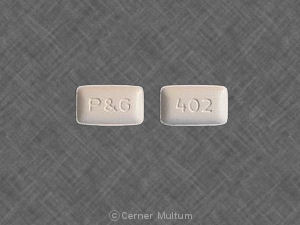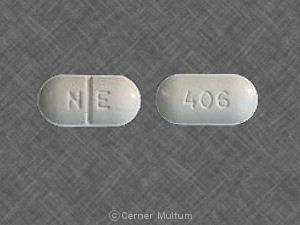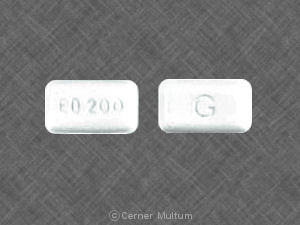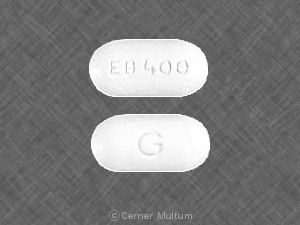What is the most important information I should know about etidronate?
You should not take etidronate if you have a condition called osteomalacia (softening of the bones).
What is etidronate?
Etidronate is a bisphosphonate (bis FOS fo nayt) medicine that alters bone formation and breakdown in the body. This can slow bone loss and may help prevent bone fractures.
Etidronate is used to treat Paget's disease of bone. Etidronate is also used to treat conditions of irregular bone growth due to total hip replacement or spinal cord injury.
Etidronate may also be used for purposes not listed in this medication guide.
What should I discuss with my healthcare provider before taking etidronate?
You should not take etidronate if you are allergic to it, or if you have a condition called osteomalacia (softening of the bones).
To make sure etidronate is safe for you, tell your doctor if you have:
- kidney disease;
- low levels of calcium in your blood;
- a dental problem (you may need a dental exam before you begin taking etidronate); or
- if you have had a recent bone fracture.
In rare cases, this medicine may cause bone loss (osteonecrosis) in the jaw. Symptoms include jaw pain or numbness, red or swollen gums, loose teeth, or slow healing after dental work. The longer you use etidronate, the more likely you are to develop this condition.
Osteonecrosis of the jaw may be more likely if you have cancer or received chemotherapy, radiation, or steroids. Other risk factors include blood clotting disorders, anemia (low red blood cells), and a pre existing dental problem.
Talk with your doctor about the risks and benefits of using etidronate.
It is not known whether this medicine will harm an unborn baby. Tell your doctor if you are pregnant or plan to become pregnant.
It is not known whether etidronate passes into breast milk or if it could harm a nursing baby. Tell your doctor if you are breast-feeding a baby.
How should I take etidronate?
Etidronate is usually taken once per day. Follow all directions on your prescription label. Your doctor may occasionally change your dose. Do not use this medicine in larger or smaller amounts or for longer than recommended.
When taking etidronate for total hip replacement, you may need to start the medicine 1 month before your surgery.
Take etidronate at least 2 hours before you eat or drink anything, especially foods that are high in calcium such as milk, cheese, or yogurt.
Your doctor will need to check your progress while you are using etidronate.
Etidronate is only part of a complete program of treatment that may also include diet changes and taking calcium and vitamin supplements. Follow your doctor's instructions very closely.
Pay special attention to your dental hygiene while taking etidronate. Brush and floss your teeth regularly. If you need to have any dental work (especially surgery), tell the dentist ahead of time that you are using etidronate.
Your doctor will determine how long to treat you with this medicine. Etidronate is often given for only 3 to 6 months.
Store at room temperature away from moisture and heat.
After you stop taking etidronate, you must stay off the medication for at least 90 days before starting etidronate therapy again.
What happens if I miss a dose?
Take the missed dose as soon as you remember. Skip the missed dose if it is almost time for your next scheduled dose. Do not take extra medicine to make up the missed dose.
What happens if I overdose?
Seek emergency medical attention or call the Poison Help line at 1-800-222-1222.
What should I avoid while taking etidronate?
Avoid taking any other medicines for at least 2 hours after taking etidronate. This includes vitamins, calcium, and antacids. Some medicines can make it harder for your body to absorb etidronate.
What are the possible side effects of etidronate?
Get emergency medical help if you have signs of an allergic reaction: hives; wheezing, difficulty breathing; swelling of your face, lips, tongue, or throat.
Stop using etidronate and call your doctor at once if you have:
- severe pain in your joints, bones, or muscles;
- jaw pain, numbness, or swelling;
- severe diarrhea; or
-
low calcium levels --muscle spasms or contractions, numbness or tingly feeling (around your mouth, or in your fingers and toes).
Common side effects may include:
- headache;
- upset stomach;
- leg cramps; or
- joint pain.
This is not a complete list of side effects and others may occur. Call your doctor for medical advice about side effects. You may report side effects to FDA at 1-800-FDA-1088.
What other drugs will affect etidronate?
Tell your doctor about all your current medicines and any you start or stop using, especially:
-
a blood thinner --warfarin, Coumadin, Jantoven.
This list is not complete. Other drugs may interact with etidronate, including prescription and over-the-counter medicines, vitamins, and herbal products. Not all possible interactions are listed in this medication guide.
Where can I get more information?
Your pharmacist can provide more information about etidronate.
Remember, keep this and all other medicines out of the reach of children, never share your medicines with others, and use this medication only for the indication prescribed.
Every effort has been made to ensure that the information provided by Cerner Multum, Inc. ('Multum') is accurate, up-to-date, and complete, but no guarantee is made to that effect. Drug information contained herein may be time sensitive. Multum information has been compiled for use by healthcare practitioners and consumers in the United States and therefore Multum does not warrant that uses outside of the United States are appropriate, unless specifically indicated otherwise. Multum's drug information does not endorse drugs, diagnose patients or recommend therapy. Multum's drug information is an informational resource designed to assist licensed healthcare practitioners in caring for their patients and/or to serve consumers viewing this service as a supplement to, and not a substitute for, the expertise, skill, knowledge and judgment of healthcare practitioners. The absence of a warning for a given drug or drug combination in no way should be construed to indicate that the drug or drug combination is safe, effective or appropriate for any given patient. Multum does not assume any responsibility for any aspect of healthcare administered with the aid of information Multum provides. The information contained herein is not intended to cover all possible uses, directions, precautions, warnings, drug interactions, allergic reactions, or adverse effects. If you have questions about the drugs you are taking, check with your doctor, nurse or pharmacist.
Copyright 1996-2018 Cerner Multum, Inc. Version: 7.01. Revision date: 11/8/2017.



